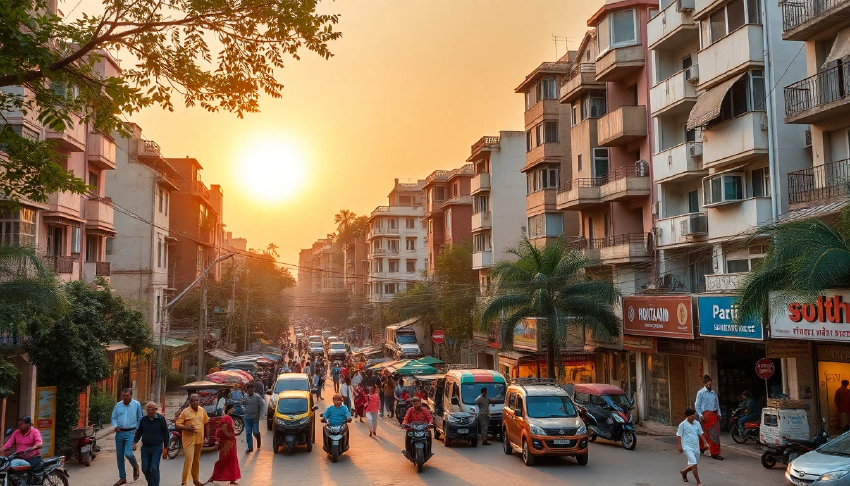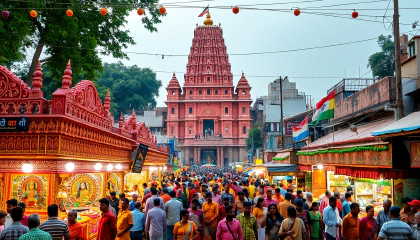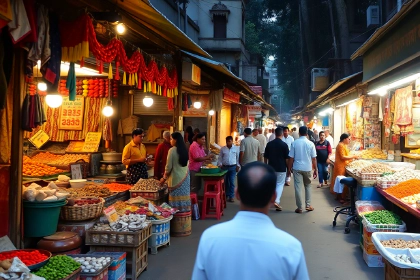
Urban Renewal in Delhi's CR Park: Balancing Culture & Growth
Urban Renewal and Cultural Identity in Delhi’s Chittaranjan Park: A Balancing Act
Chittaranjan Park, affectionately known as CR Park, stands as a vibrant testament to Delhi’s multicultural tapestry. This South Delhi neighborhood, born from the aftermath of partition, has evolved into a unique blend of Bengali heritage and modern urban living. As Delhi races towards rapid development, CR Park faces the challenge of preserving its cultural identity while embracing necessary urban revitalization. This article explores the delicate balance between enhancing living conditions and maintaining the area’s distinctive Bengali character.
The Rich History and Cultural Significance of Chittaranjan Park
From Refugee Settlement to Cultural Hub
Originally established as the East Pakistan Displaced Persons (EPDP) Colony in the 1960s, Chittaranjan Park emerged as a sanctuary for Bengali refugees following the partition of India. Over the decades, it has transformed from a rocky, barren landscape into a thriving community that serves as Delhi’s beating heart of Bengali culture.
A Microcosm of Bengali Heritage
CR Park’s cultural significance extends far beyond its geographical boundaries. The neighborhood is renowned for its vibrant Durga Puja celebrations, bustling fish markets, and streets lined with shops selling traditional Bengali sweets and snacks. The area’s numerous cultural institutions, including the Bangiya Samaj and Chittaranjan Bhawan, play a crucial role in preserving and promoting Bengali arts, literature, and traditions.
Urban Challenges and Revitalization Efforts
Infrastructure and Public Spaces
As CR Park’s population has grown and diversified, the neighborhood faces typical urban challenges such as traffic congestion, inadequate waste management, and strain on public utilities. Urban renewal efforts focus on addressing these issues while maintaining the area’s unique character.
One notable project is the redevelopment of local parks and community spaces. The transformation of these areas aims to provide residents with green spaces that serve both recreational and cultural purposes, accommodating traditional gatherings while meeting modern urban needs.
Housing and Architectural Evolution
The original single-story homes that characterized early CR Park are gradually giving way to multi-story apartments. This shift reflects both the increasing demand for housing in South Delhi and changing architectural preferences. Urban planners and local authorities are working to ensure that new developments respect the neighborhood’s cultural aesthetics while meeting contemporary living standards.
Preserving Cultural Identity Amidst Modernization
Balancing Tradition and Progress
CR Park’s journey from a refugee settlement to a desirable South Delhi locality showcases the community’s resilience and adaptability. However, this evolution brings challenges in maintaining its distinct Bengali identity. Local initiatives, such as cultural festivals and food fairs, play a crucial role in keeping traditions alive and introducing them to new generations and non-Bengali residents.
Case Study: The Market Areas
The transformation of CR Park’s market areas serves as a microcosm of the neighborhood’s broader changes. Traditional Bengali markets, once dominated by fish stalls and sweet shops, now coexist with modern retail outlets and cafes. This blend reflects the area’s evolving demographic and the need to cater to diverse tastes while preserving its cultural essence.
The Role of Community Engagement in Urban Renewal
Participatory Planning and Design
Successful urban renewal in CR Park hinges on active community involvement. Local authorities and urban planners are increasingly adopting participatory approaches, engaging residents in decision-making processes. This collaborative effort ensures that revitalization projects align with the community’s needs and cultural values.
Cultural Programs and Education
To maintain CR Park’s cultural identity, various organizations conduct programs that educate younger generations about Bengali heritage. These initiatives, ranging from language classes to traditional art workshops, help bridge the gap between the area’s historical roots and its contemporary urban context.
Conclusion: A Model for Cultural Preservation in Urban Development
Chittaranjan Park’s ongoing urban renewal presents a unique case study in balancing modernization with cultural preservation. As Delhi continues to grow and evolve, CR Park stands as a testament to the possibility of maintaining a strong cultural identity within a rapidly developing urban landscape. The neighborhood’s journey offers valuable lessons for other culturally rich areas facing similar challenges in India’s metropolises.
By embracing its heritage while adapting to contemporary urban needs, Chittaranjan Park is crafting a sustainable model of development that respects its past while looking toward the future. As urban renewal efforts progress, the spirit of “Little Kolkata” in Delhi remains vibrant, offering a glimpse into how cities can grow without losing their soul.





